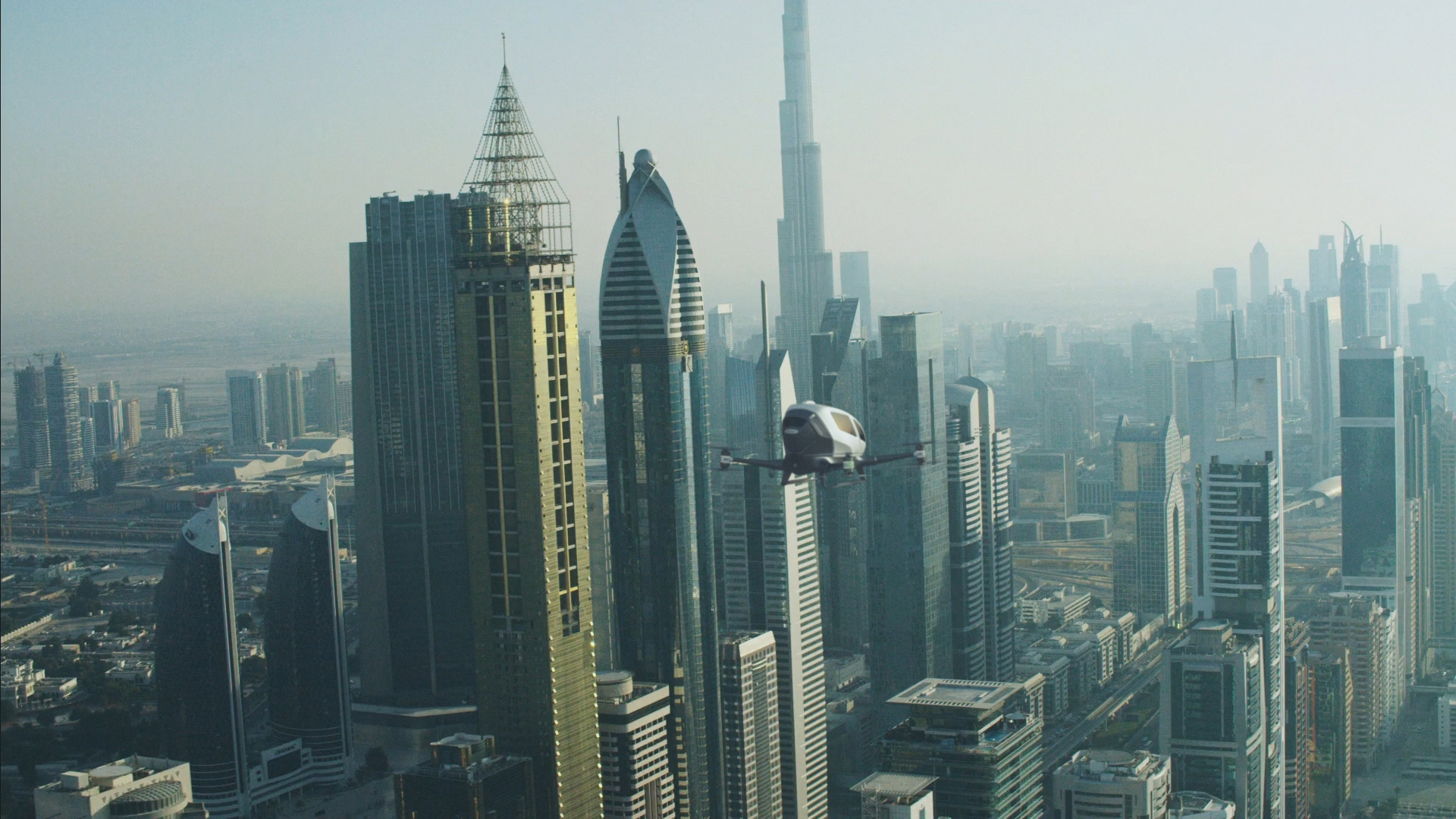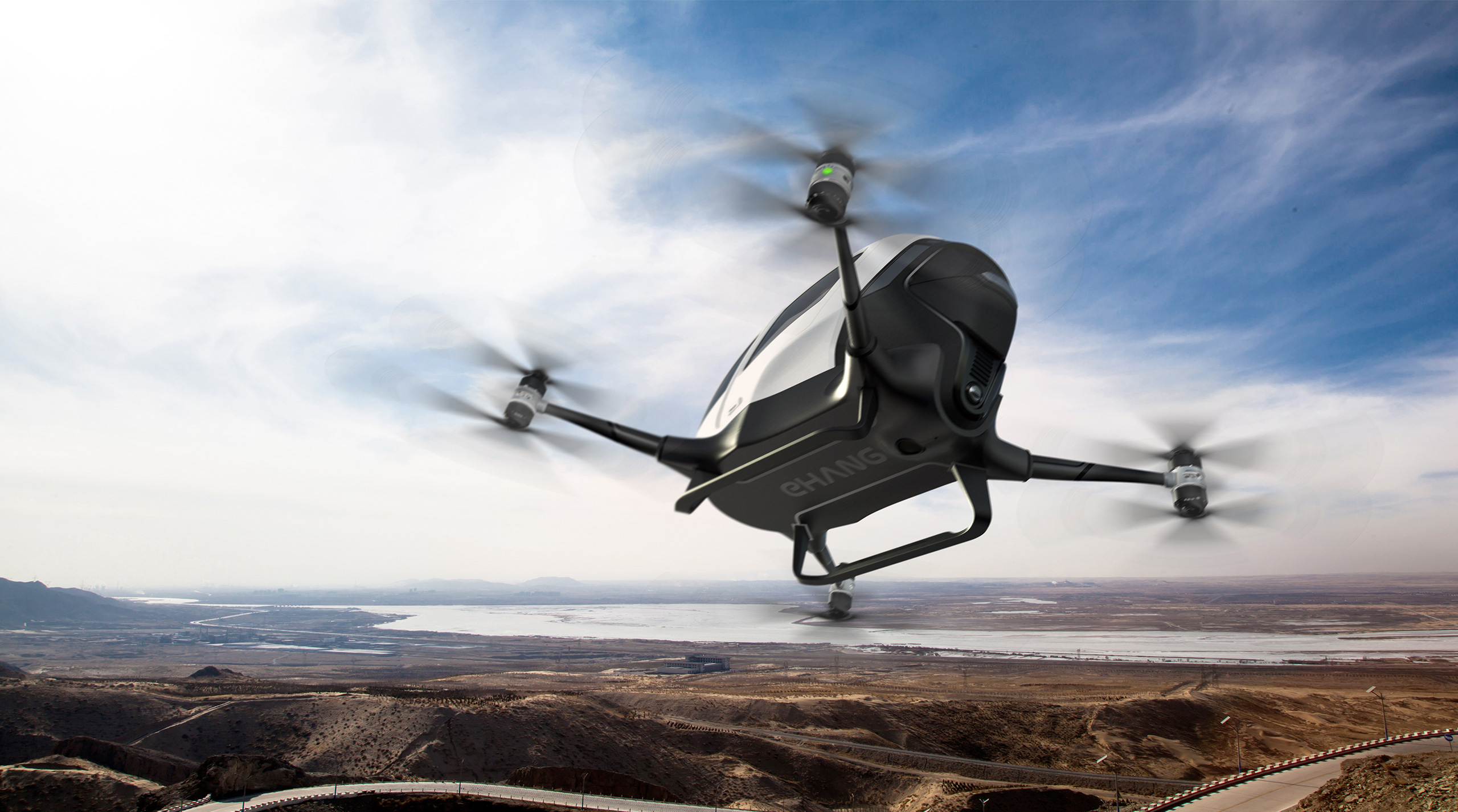
While the world is still debating the safety of self-driving cars, the futuristic city-state of Dubai, in the United Arab Emirates (UAE), is preparing to launch an autonomous aerial taxi. Starting in July, commuters will be able to summon the world’s first passenger drone, the EHang 184, to transport them to their desired destination without having to deal with Dubai’s congested freeways.
The 142-horsepower quadcopter, which debuted at the Consumer Electronics Show in Las Vegas almost a year ago, in January 2016, weighs 440 pounds and can fly at heights of up to 11,500 feet. Powered by eight propellers, the four-legged, egg-shaped vehicle has room for a single passenger weighing up to 220 pounds and a small suitcase. Though the aerial taxi can reach speeds of up to 100 mph, Dubai’s transportation officials say it will typically operate at about 62 mph.

Riders can ask for the flying taxi to pick them up from designated zones using the company’s smartphone app. When the drone arrives, he/she straps into the race-car-style seat, selects one of the pre-programmed destinations on the touchscreen, and sits back and enjoys the flight. To ensure the passenger’s safety, all flights are monitored remotely by a control room on the ground.
In the unlikely event that any of the components malfunction or disconnect, the EHang 184 will make an emergency landing in the closest possible area to ensure the customer’s safety. The drone is also programmed to conduct complex calculations to ensure its route won’t collide with that of another drone. While having no control over the remotely piloted vehicle may appear scary, the manufacturer, China-based EHang, says, “(It is) the safest, smartest and eco-friendly low altitude autonomous aerial vehicle.” The only drawback? The EHang 184 has a battery life of 30 minutes and a flight range of just 31 miles, which means that those with longer commutes are out of luck. Also unknown, is the cost of each ride.

Though the aerial taxi is radical, it is not the first driverless transportation option available to Dubai’s residents. As part of its goal to have 25% of public transit be automated by 2030, the authorities have built the world’s longest driverless metro and introduced self-navigating shuttles to transport visitors and residents in downtown Dubai. Officials recently also partnered with US startup Hyperloop One to attempt to build supersonic speed pods to carry passengers between Dubai and the capital of the UAE, Abu Dhabi.
Resources: telegraph.co.uk, npr.org, phys.org, cntraveler.com